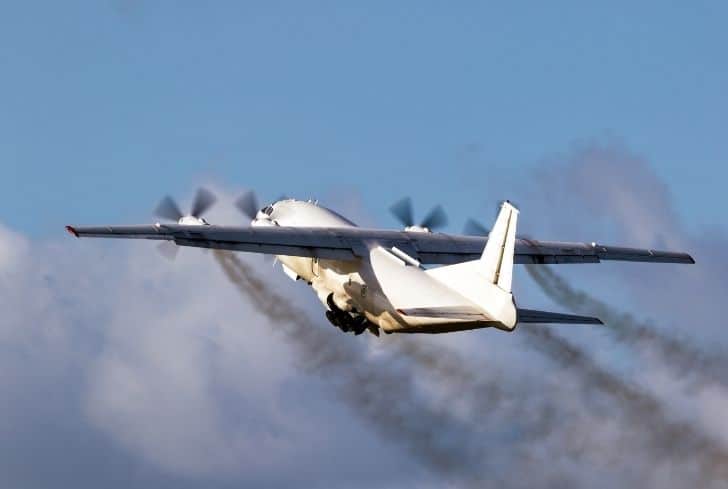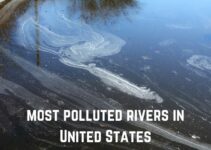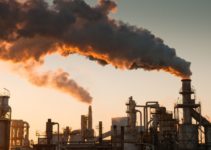The aviation industry revolutionized how human beings traveled, making it able for people to travel from one continent to the other, across continents, seas, and oceans, within hours. However, the industry has led to lots of losses in terms of lives and marine pollution, as well as having an impact on the environment, even without accidents. Here are more facts about the aviation industry and its environmental impact.
Is Aviation Bad for the Environment?
In a word, YES! Aviation is not the primary threat to the environment, but it sure ranks among the top threats. The industry sees a giant vehicle fly over long distances and for a prolonged duration, all-the-while burning gallons of fuel and releasing a lot of greenhouse gases.
This industry is also responsible for the deaths of many birds while a plane is flying, the damage to the marine environment in case of accidents in bodies of water, as well as noise pollution when a plane is flying.
Aviation is responsible for approximately 1 gigaton of carbon dioxide in the atmosphere every year. According to the International Energy Agency, humans added about 32.6 gigatons of carbon dioxide into the atmosphere in 2017, meaning aviation was responsible for about 3% of that.
The more unfortunate fact is that only about 20% of the total world population uses the aviation industry and one-third of that is located in the United States. The actions of few people are affecting the entire planet, its inhabitants and future generation. Even more saddening is that the number of those flying is growing every year, meaning more damage to the environment.
Is the Aviation Industry Responsible for Climate Change?
So, is aviation responsible for climate change? The answer is both yes, and no.
Aviation contributes to environmental pollution, which in turn contributes to climate change. First, airplanes, like other vehicles, rely on fuel, which when combusted, releases carbon dioxide gas at levels of above 2% which contributes to global warming and ultimately, climate change.
Secondly, take-offs require significantly high amounts of energy, meaning more heat is emitted to the atmosphere, contributing to climate change. Thirdly, there are other emissions from the aviation industry, apart from carbon dioxide. They include nitrogen oxides, (NOx), water vapor, contrails, and particulates, all of which have additional warming effects
The aviation industry could release gases and particulates that affect the environment, but they are better in comparison to some other industries. For instance, many manufacturing industries release a lot of smoke and carbon dioxide that it is difficult to see beyond certain parts.
In fact, automobiles all over the world burn about 1 billion gallons of fuel as compared to 740 million gallons burned by airplanes, meaning land transport accounts for about 10% of carbon emission. Other suspects that contribute to climate change include fertilizers, pharmaceutical waste which affects water bodies, all the methane from livestock, and deforestation, among many others. Indeed, the aviation industry contributes to global warming, but there are more serious suspects.
Is Driving Better Than Flying for The Environment?
Convincingly, the answer to this is NO. There are not as many jets, helicopters, air balloons and airplanes on earth as compared to the number of vehicles on land. There were about 1.32 billion cars, trucks and buses all over the world in 2016, and this figure did not include off-road vehicles or heavy machinery.
Compare that to roughly 23,600 passengers and aircraft with 2,500 more in storage in 2017, and over 150,000 planes in the world over the course of history. Even without looking at the amounts of greenhouse gases emitted daily, it is clear land vehicles will have to produce much more than aircraft.
As already mentioned, automobiles account for about 1 billion gallons of fuel burned per day as compared to 740 million gallons by airplanes. Also, automobiles and land transport account for about 10% of carbon emissions, with the aviation industry guilty of about 2% of the same. Research by the University of Oslo’s International Institute for Applied Systems Analysis found that air travel results in a lower temperature change per passenger-kilometer than car travel in the long run.
Driving gasoline vehicles is only favorable to flying if there are more people in the vehicle; the more the people in a car, the less carbon dioxide emissions. Also, the lower the emissions per person ratio. A car occupied by four people on average produces 55g of carbon dioxide per passenger per kilometer, meaning the car with only the driver, will produce 220g for that one passenger. Driving will only be better than flying if the car is electric, as they have far fewer emissions than all other land, water or air vehicles.
How Do Airplanes Affect the Environment?
1. Burning a Lot of Fuel
Vehicles are built to burn fuel for locomotion to take place. However, airplanes burn fuel in a way that is really detrimental to the environment. Take a look at the arithmetic from the Smithsonian Magazine:
A Boeing 747 has a gas tank capacity of 63,500 gallons and could burn five gallons of jet fuel per mile of flight, meaning it will burn 20,000 gallons for a 4,000-mile flight. In comparison, a Honda Civic gets 30 miles per gallon and the same trip would require 133 gallons of fuel.
Surprisingly, when you carry more to a plane or if you load heavier loads, the plane will burn more fuel. Anything that reduces the payload on an airplane, reduces the fuel burned.
2. Releasing a Lot of Greenhouse Gases
The aviation industry results in about 2 to 3% carbon dioxide emission, a figure that the industry generally accepts. However, there are more gases produced than just carbon dioxide. They include nitrogen oxides (NOx), sulfur oxides, water vapor, contrails and particulates, among others, all of which have additional global warming effects. For instance, a return flight from London to San Francisco emit about 5 tonnes of carbon dioxide, per person, which is more than twice the emissions from a family car in a year
3. Effects of the Water Vapor
Aviation emits water vapor which creates clouds. The vapor in conjunction with the other harmful gases from airplanes will result in clouds that trap heat within the atmosphere. Also, any resulting rain will have trace amounts of the gases, affecting the land, animals, plants, human beings and marine life.
4. Impact on Marine Life
There are dozens of aircraft which have crashed into oceans, intentionally or not. To date, the missing Malaysian Airline flight MH370, which went missing in 2014, has never been found, although it is believed to have crashed into the Pacific Ocean. On the flip side, World War II which lasted between 1939 and 1945 saw hundreds of planes shot down over the Pacific in the war between Japan and the US. All that debris and chemical contamination has an effect on the flora and fauna of such bodies of water, including the reduction in species diversity
5. Noise Pollution
Aircraft engines produce a lot of noise, especially during take-off. Even while airborne, airplanes produce a lot of noise, from the engines and the high-speed turbulence over the fuselage. Such noises could cause community annoyance, disrupt sleep, affect academic activities in schools, and increase the risk for cardiovascular diseases especially to people living near airports.
How Does Flying Less Help the Environment?
1. Fewer Carbon Emissions
Airplanes emit several compounds, including carbon dioxide, which is primarily responsible for global warming and climate change. Flying from Europe to Asia or from the US to Asia can produce about 5 metric tons of carbon, which includes carbon dioxide and other greenhouse gases. 5 metric tons is the average amount of carbon dioxide produced by every human on the planet for a full year. Flying fewer means ultimately will result in fewer carbon emissions as not many airplanes will be in the air.
2. Less Greenhouse Gas Emissions
By default, if people opt to fly less, fewer greenhouse gases will be produced by aircraft. The emissions from planes mostly stay miles away from the surface of the earth, meaning they block heat from escaping the atmosphere, like in a greenhouse, causing temperatures on the surface of the planet to rise. They, therefore, result in ice caps melting and rising ocean sea levels.
3. Less Pollution
if people fly less, more planes will be grounded and parked. This eventually means there will be less noise pollution. It also means there will be less pollution over our bodies of water or land with fewer chances of planes crashing.
4. Less Fuel is Burned
If we fly less, it means not a lot of loads will go on the air. There will not be so many human beings or bags on planes, meaning planes that do fly will burn less fuel, and thus have a less impact on the environment as compared to if the plane was full of people and loads.
How Does Air Travel Affect Climate Change?
1. It pumps lots of harmful gases in to the environment: Air travel grows by the air, and in 2019, there were 9 million trips all over the world. All these trips meant that billions of gallons of fuel were burned by the airplanes. Traveling by plane pumps out carbon dioxide and other toxic nitrogen oxides, cancer-causing exhaust particulates and other dangerous particles.
2. It contributes to global warming: Carbon dioxide, in particular, is responsible for absorbing heat and reemitting it to back to earth, resulting in global warming. The gas, vapor and other emissions, also create clouds that trap heat within the atmosphere.
3. The emissions stay in the atmosphere: Unlike emissions from the ground which could rise up to the atmosphere, emissions from airplanes are released thousands of miles above our heads. They stay in the atmosphere and could warm it for centuries. As they stay in the atmosphere for long, and because more air travel means more of the emissions, they continue to affect the climate through triggering reactions and atmospheric effects that heat the planet.
4. Ozone and methane: These two are produced by airplanes, but when nitrogen oxides from the planes react with oxygen at that high altitude, more ozone is produced, although it removes methane from the atmosphere. Ozone and methane are greenhouse gases and airplanes therefore lead to both heating and cooling effects in the atmosphere. However, the cumulative net result will be to drive more warming, and subsequently climate changes.
5. Uncertain effects: Contrails are clouds of tiny ice crystals produced by aircraft depending on the atmospheric conditions. Although the science is not clear how contrails affect the climate, some studies have suggested that they have a similar effect as the carbon dioxide produced during a flight. Also, it is unclear if aircraft exhaust could affect cloud formation, which could also contribute to global warming and climate change.
References:
http://pubs.acs.org/doi/abs/10.1021/es9039693







